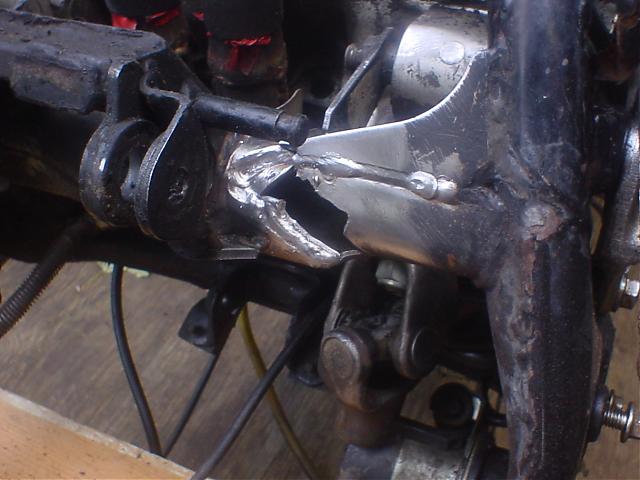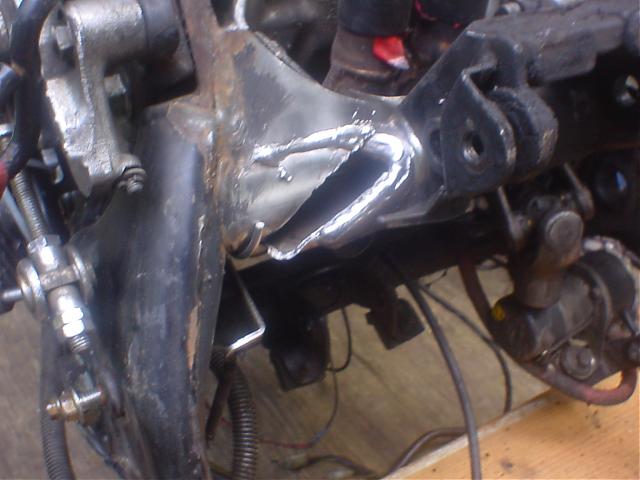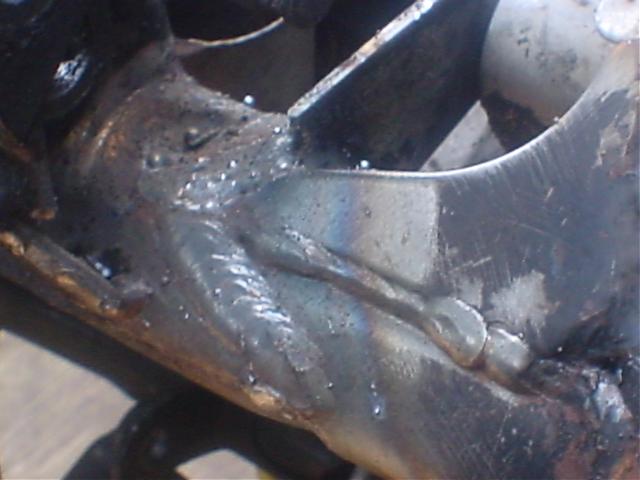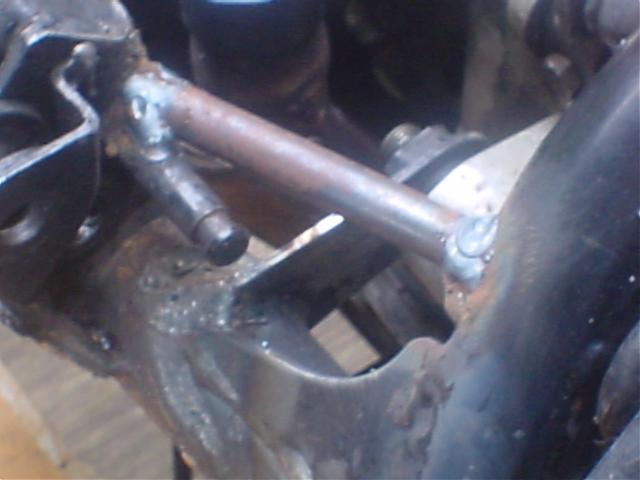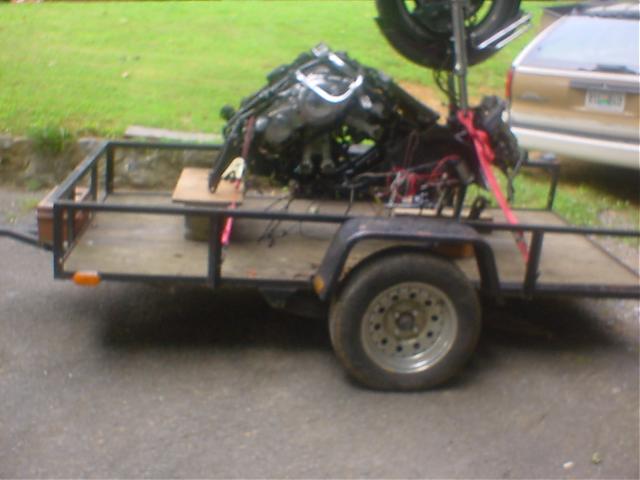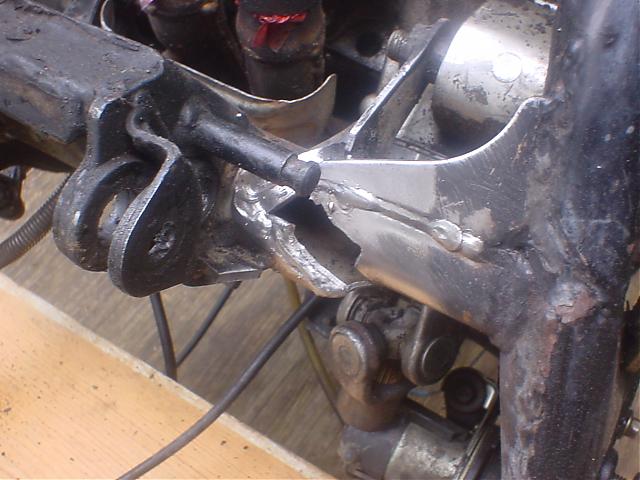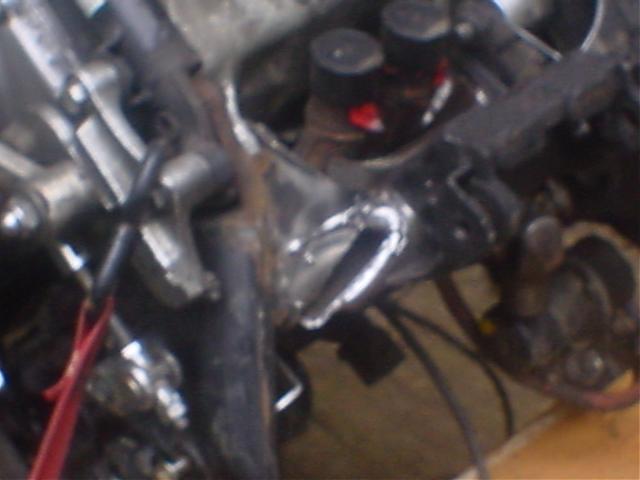-
Posts
6,488 -
Joined
-
Last visited
-
Days Won
1
Content Type
Profiles
Forums
Gallery
Events
Store
Everything posted by Venturous Randy
-
Like Brad said, EBC HH brake pads. The ones I got were that plus they said "Superbike". It has made a huge difference in stopping my 83. It was part of my upgrade in pulling the camper. randya
-

well,,,,, had the bike on the road for
Venturous Randy replied to gord's topic in Embarrassing Moments
Rocket, the two dumps that I did in the same day were before the ghost flame paint job and I was lucky that in both cases I was able to stop it before it got to the fairing. randya -
I just checked with my trusted independent motorcycle shop and he said the same thing you did. He also noted this is a fuel/air mixture that is being adjusted just like the schematic shows. He also stated that about three turns out appears to be best on the average Venture. He charges $20 for a carb sync and says he can make money on that. randya
-
Gerald, you have brought up a good point. I was of the opinion that you are leaning it out by increasing the turns out. Mine was rich when they were turned in too far. Also, I don't believe fuel goes thru this point, but air. If fuel went thru it, it would need more than threads to keep the fuel from leaking out, especially with this being about the lowest point on the carb. Let's do a poll here and see what others think. randya
-
While at Vogal, I had my carbs synced by the professionals and it ran better and smoother on the hand grips. But, I knew my carbs needed to have the air mixture setting adjusted because at idle the richness would bring tears to your eyes. Without starting the bike, I started around the carbs and found two was about two turns out and one about one turn out. When I got to the front carb on the right side, I tried to turn it and it was pretty tight, but moved a little. When I bottomed out, it would not move and in the process of trying to make it move, I broke off the two raised edges that are on each side of the slot, therefore no more slot. I have another set of carbs I bought cheap off ebay, so I knew at worst, it would take pulling the carbs off and breaking them apart and cleaning them all and putting a spare on. So, if I really screwed the carb up on the bike, it would be ok. What I ended up doing was I used a drill bit that fit the hole with minimal slop and drilled a dimple in the head of the screw. I then used a small drill bit that fit the easyout, or screw extractor as some would know. I was able to drill deep enough to get a hole without drilling so deep that I drilled to where it shanked down to the step area. By tapping the easyout and seating it, I was able to unscrew the adjustment screw. I used a piece of rubber hose on my shopvac to pull out any debris. I was then able to put in one of the spare mixture screws from the other carbs and I was back in business. I then hooked up my son's carb syncing outfit and synced them myself. It took a few minutes, but I got them all the same. Now the bike is again running good and don't bring you to tears when idleing. randya
-

83 Broken frame
Venturous Randy replied to Venturous Randy's topic in Suspension, Brakes, Tires, Etc.
The trick to fixing this is getting the bent suspension towers back in place. We used a big sledge hammer to get it close and then used a cable "come-a-long" to pull it to where there was not any gap in the broken area. The other part, as I nored in the first post was to take enough plastic off and the rear frame section to turn the bike upside down. This allows you to get to everything. It has been about 14 months and 7,000+ miles since I did this, including pulling a 440 pound camper down to Vogal and everything seems to still be doing good. randya -
Sunday, after getting our camping stuff set up in Townsend TN, below Gatlinburg, my son and and grandson on their Yamaha FZ1, and the wife and I on the Venture took off down the Foothills Parkway to ride the Dragon. Just after we turned onto 129, as I hit a bump at the beginning of the first bridge, I thought I had a blowout or busted the rear shock. When I found a good place to pull over, the rear tire looked fine and when I checked the rear shock pressure, it was what I had it set on. When I looked under it, I saw that the rear suspension linkage had shifted forward and the frame on the cross bar was twisted and split. I have checked the frame several times on my 83 Venture and felt confidant that my frame had been replaced with a new one somewhere in its earlier life. I had asked what to look for on this site and was told to look for gussets and any signs of rust. There has never been any signs of rust and the frame looked beefy with gussets around this area. My first look with a flashlight does not indicate any rust present in the split areas and the frame walls look aproximately .075 thick and shiney. The bike is still sitting on the trailer that I hauled it home on Sunday night. At the moment I have the bike sitting upside down on my trailer. I have all the plastic off except the front fender and the rear frame section off. It appears that what has happened is the center section has twisted and split. I am taking it to a friend that has made a living as a welder and has built many racecars. I am going to have him look at it and see what we can do. I know that if he will agree to tackle it, it will be stronger than new when he finishes it. What really concerns me is this frame WAS NOT RUSTED AT ALL. It just twisted with the suspension pushing up and the engine weight pushing down on the other side. I did see areas that appeared to have poor weld penitration. I will post some pictures as soon as I can. Well, she is sitting upright and the rear suspension is on. I took it to my racecar building buddy and he did a great job getting it back right. He also added some 3/8 rod from the tower that has the suspension mount and center stand over to the frame, creating a triangulation for much added strength. I had my collector with me so we could see where we had room and it would not get in the way. Even though there was obviously some poor welding, but absolutely no rust, I feel I may have also contributed to the problem over the last nine years that I have had the bike. I have routinely spun the bike around while on the centerstand. My garage floor is very smooth and the bike spins easy, but I am going to stop doing that as this has probably put a lot of pressure on the frame in that area.
-

well,,,,, had the bike on the road for
Venturous Randy replied to gord's topic in Embarrassing Moments
I dumped my 83 twice in one day. I was making a u-turn in my driveway and got the front tire into some leaves that had mud under them. I layed it down and ended up having to get the wife to help. Everytime I tried to pick it up, it just slid more in the mud. I kept getting closer to something, so I got a long 2X4 and put under it and got it up. I went to work and was talking to a friend and he wanted to see the bike, so we walked out to the parking lot. As we were talking, I reached over and hit the start button and my clutch switch was not working correctly, and it was in gear, so the bike jumped forward and fell over. We were both laughing so hard that with both of it was hell to get up. As soon as I got home, I fixed the clutch switch. randya -
That's a good question. Whenever I have had a situation on my 83 where the warning light started flashing, it has never went to solid on as others have noted. I am curious what kind of responses you get on this one. randya
-
What Don said will probably fix your problem, but also check to see that the resistor connection is not broken. I have also seen this happen. The resistor is in the clear sleeve on the green wire coming from the battery that is either stuck down in one of the battery cap holes, or in it's own little hole. randya
-
I just converted my 83 to 86 up and it is a world of difference. I hated the 83 with the light back in the tunnel. I am not sure what year you have as you have not updated your profile to add your bike under your name, but my headlight with the PIAA bulb and two 55w running lights does real well. randya


